Galaxies Messier 106 & NGC 4217


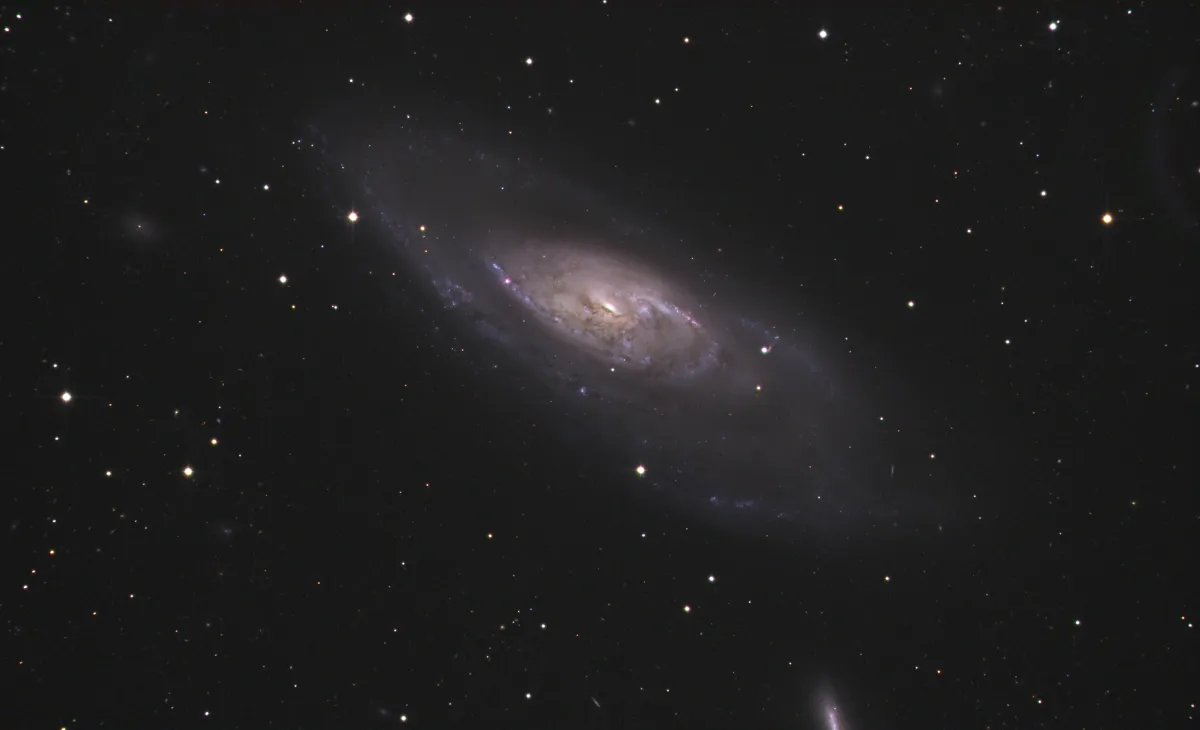
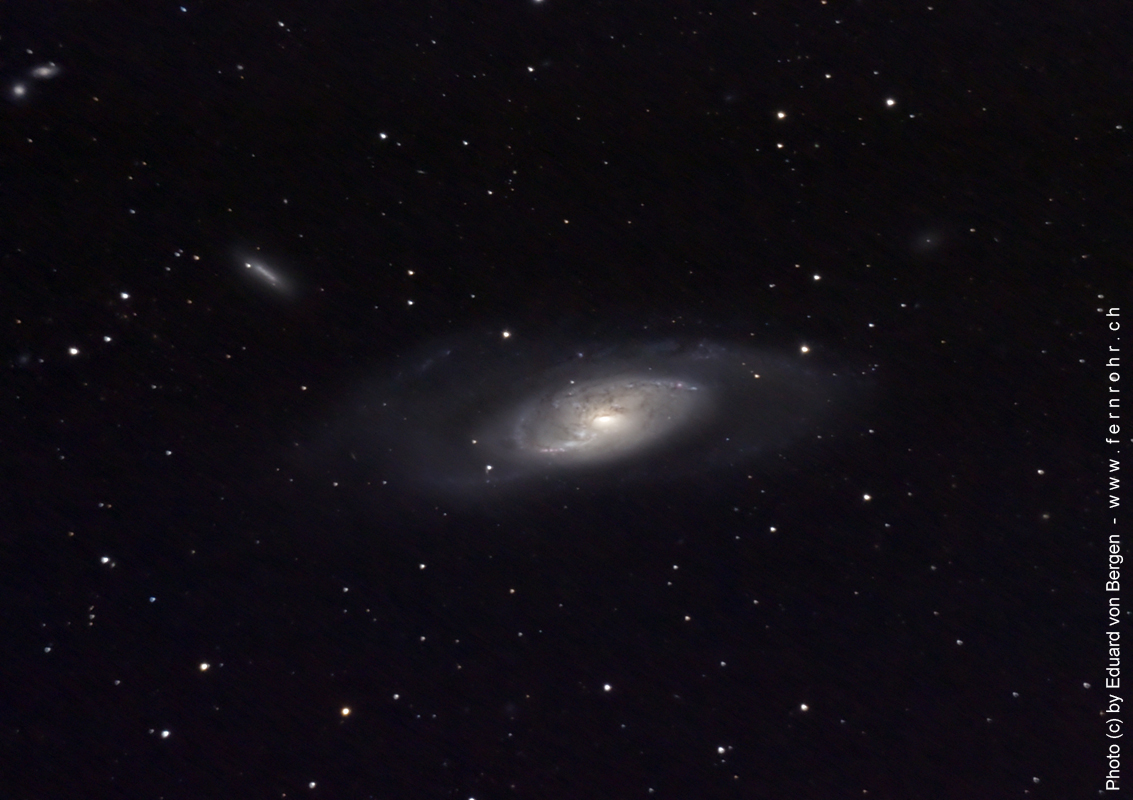
History
The galaxy M 106 was discovered on 17th July 1781 by Pierre Méchain, a good friend of Charles Messier. Unfortunately, his discovery came after Messier submitted his list of for publication in the 1784 Connoissance des Temps. The nebula might have been included in a later publication of Messier's catalog, but there was none. This discovery was therefore unknown to William Herschel when he came across this galaxy on 9 March 1788. This was included in the "General Catalog" by his son John in 1830 and later by Dreyer as NGC 4258 in his "New General Catalog of Nebulae and Star Clusters" published in 1888. It was not until 1947 that Helen Sawyer identified Hogg NGC 4258 with Méchain's discovery and added it to the Messier catalog along with M 105 and M 107. [196]
Physical Properties of M 106
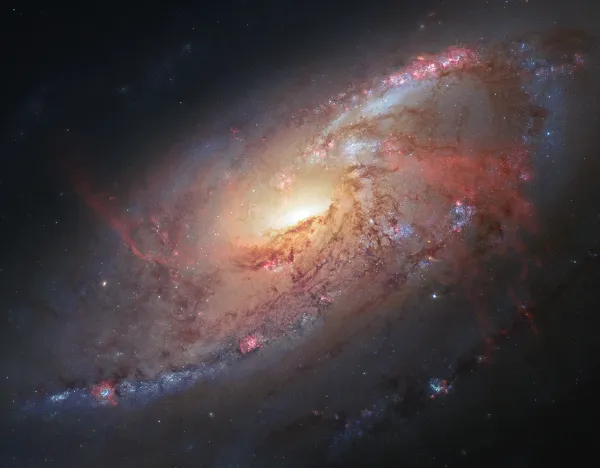
The image shown in Fig. 3 is a combination of images taken with the Hubble Space Telescope (central region) and earth-based 12.5 and 20 inch telescopes from Robert Gendler in New Mexico. It shows one of the most striking features of the M 106: an additional pair of arms. Most spiral galaxies only have one pair of arms, but M 106 has an additional set that can be seen here as scraps of red gas. In contrast to the other arms, these two additional arms are made out of hot gas rather than stars. Astronomers attribute these ghostly arms to the supermassive black hole at the centre of the galaxy. The extra arms appear to be an indirect result of the violent swirling of matter around the black hole. Heliocentric velocities measured in the last 20 years range from 416 km/s to 456 km/s and distances from 6.6 Mpc to 7.6 Mpc (21 to 24 million light years) [145, 215]
| Designation | NGC 4258 |
| Type | Gx (SBbc) |
| Right Ascension (J2000.0) | 12h 18m 57.8s |
| Declination (J2000.0) | +47° 18' 25" |
| Diameter | 18.6 × 7.2 arcmin |
| Photographic (blue) magnitude | 9.1 mag |
| Visual magnitude | 8.4 mag |
| Surface brightness | 13.6 mag·arcmin-2 |
| Position Angle | 150° |
| Redshift (z) | 0.001494 |
| Distance derived from z | 6.31 Mpc |
| Metric Distance | 7.440 Mpc |
| Dreyer Description | vB, vL, vmE 0°, sbMBN |
| Identification, Remarks | WH V 43; h 1175; GC 2841; M 106; UGC 7353; MCG 8-22-104; CGCG 243-67; VV 448; CGCG 244-3 |
Other Galaxies in the Area
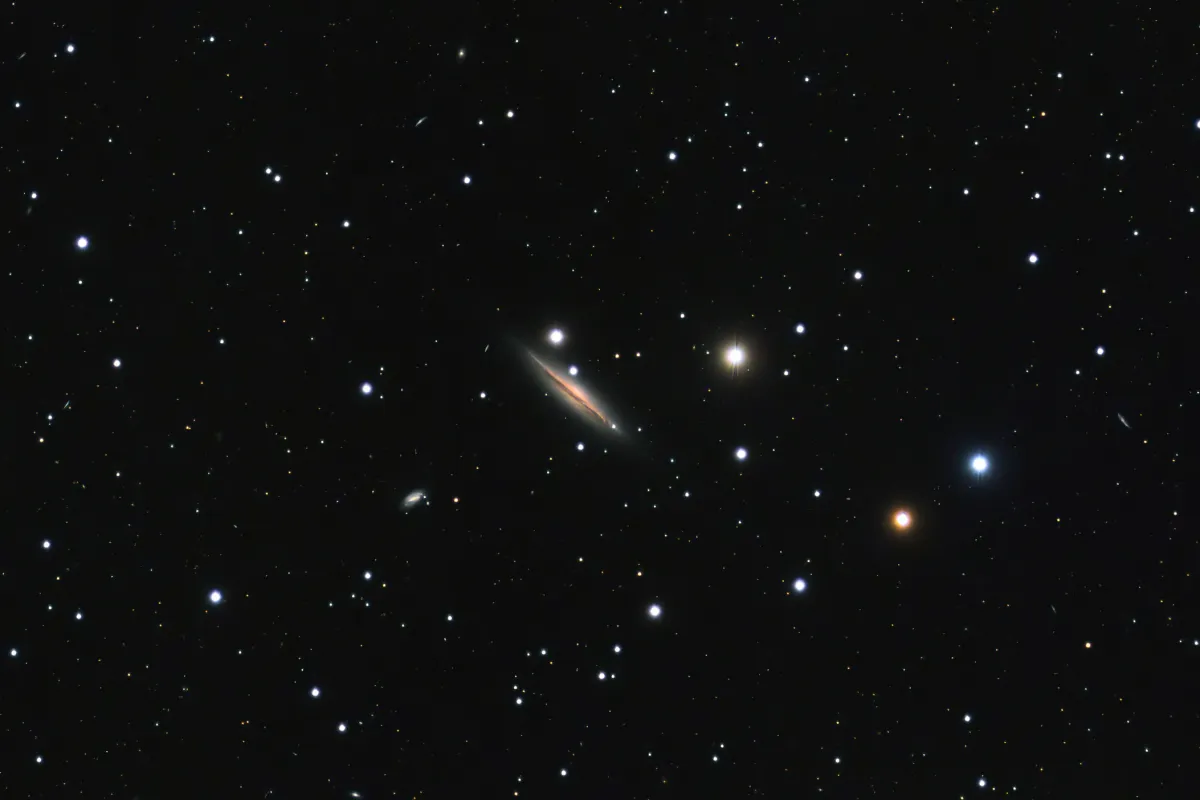
The galaxy NGC 4217 was discovered by William Herschel on 10 April 1788. It has an angular extent of about 5.2 x 1.5 arc minutes and an apparent magnitude of 12 magnitudes. We see it directly from the edge, which is why it is not entirely clear whether it is a classic spiral galaxy or a bar-shaped spiral galaxy. The heliocentric velocities measured in the last 20 years by means of spectral shifts range from 1000 km/s to 1031 km/s. Distances range from 17 Mpc to 20 Mpc (55 to 65 million light years). [145, 196]
NGC 4226 was discovered by John Herschel on 19 March 1828. With an angular extent of about 1.0 x 0.5 arc minutes, it is quite small and is only 14 magnitudes bright. The galaxy appears to have a bar-spiral structure. In the last 20 years, various measurements have been made, which showed heliocentric speeds of 7238 km/s to 7260 km/s. The resulting distances range from 104 Mpc to 121 Mpc (339 to 394 million light years). [145, 196]
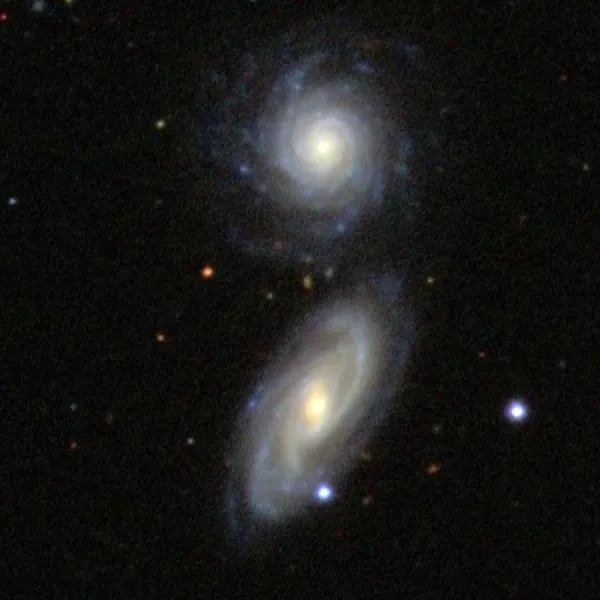
The two galaxies NGC 4231 and NGC 4232 were discovered by William Herschel on 9 March 1788. With an angular extent of about 1.5 arc minutes, they are quite small and with a brightness of 15 magnitudes they are very faint. NGC 4231 is a spiral galaxy of the morphological type SA0, moving away at a speed of about 7400 km/s and lying at a distance of about 107 Mpc to 109 Mpc (349 to 355 million light years). NGC 4232 is a bar spiral of the morphological type SBb. It is somewhat closer to us at a distance of 104 Mpc to 107 Mpc (339 to 349 million light years) and is moving away at around 7200 km/s. [145, 196]
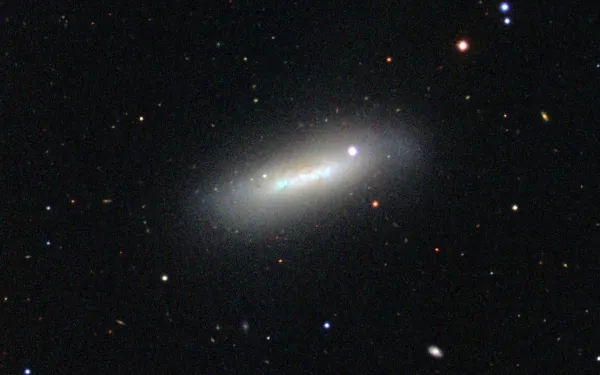
NGC 4248 was also discovered by William Herschel on the same day. It is an irregular galaxy that we see from the edge. Measured heliocentric speeds range from 445 km/s to 486 km/s and distances from 7.2 Mpc to 8.9 Mpc. It is therefore in the immediate vicinity of M 106, which is probably responsible for the appearance of NGC 4248 through gravitational interactions. [145, 196]
| Name | RA | Dec | Type | bMag | vMag | B-V | SB | Dim | PA | z | D(z) | MD | Dreyer Description | Identification, Remarks |
|---|---|---|---|---|---|---|---|---|---|---|---|---|---|---|
| NGC 4217 | 12 15 50.6 | +47 05 24 | Gx (Sb) | 12.0 | 11.2 | 0.8 | 13.3 | 5.2 × 1.5 | 50 | 0.003426 | 14.47 | 19.580 | pF, L, mE 45°, ** n, p of 2 | WH II 748; h 1149; GC 2807; UGC 7282; MCG 8-22-87; CGCG 243-53 |
| NGC 4226 | 12 16 26.3 | +47 01 32 | Gx (Sa/P) | 14.4 | 13.5 | 0.9 | 12.6 | 1 × 0.5 | 127 | 0.024220 | 102.3 | 117.50 | F, S, lE, f of 2 | h 1155; GC 2816; UGC 7297; MCG 8-22-90; CGCG 243-57 |
| NGC 4231 | 12 16 48.9 | +47 27 29 | Gx (S0-a) | 14.5 | 13.6 | 0.9 | 13.8 | 1.2 × 1.1 | 33 | 0.024687 | 104.2 | vF, vS, n of D neb | WH III 719; GC 2827; UGC 7304; MCG 8-22-94; CGCG 243-60; NPM1G +47.0223 | |
| NGC 4232 | 12 16 49.0 | +47 26 20 | Gx (SBb/P) | 14.4 | 13.6 | 0.8 | 13.5 | 1.3 × 0.7 | 155 | 0.024202 | 102.2 | vF, vS, s of D neb | WH III 720; GC 2828; UGC 7303; MCG 8-22-93; CGCG 243-59; IRAS 12143+4743 | |
| NGC 4248 | 12 17 50.4 | +47 24 33 | Gx (SBb) | 13.1 | 12.5 | 0.6 | 13.7 | 2.9 × 1.2 | 108 | 0.001614 | 6.82 | 7.300 | vF, S, pmE, psbM | WH II 742; h 1169; GC 2834; UGC 7335; MCG 8-22-99; CGCG 244-1; CGCG 243-64 |
Finder Chart
M 106 is located in the constellation Canes Venatici about halfway between the stars Chara (β Canum Venaticorum) and Phecda (γ Ursae Majoris). It is circumpolar for Central Europe and is highest in the night sky from December to August.
